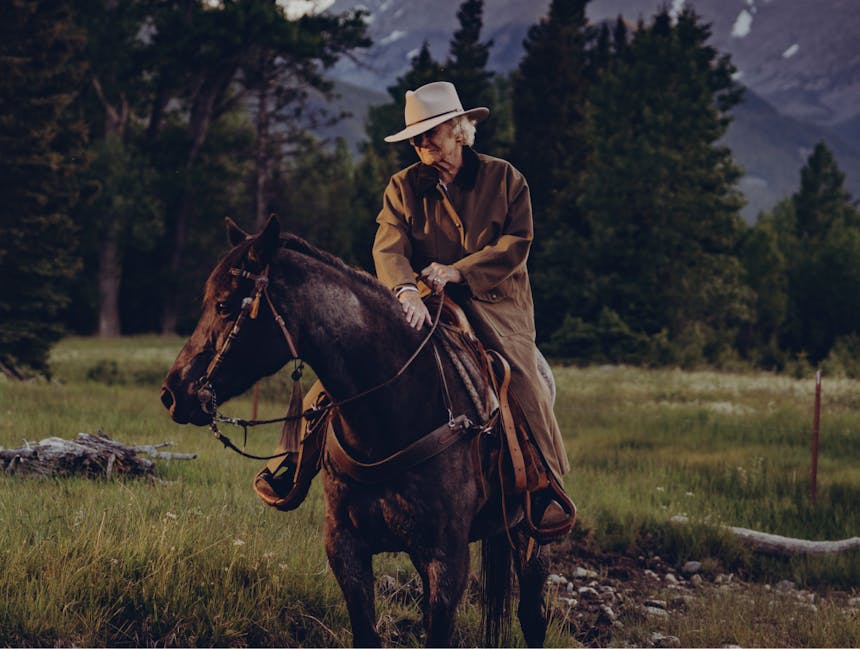By the time Barbara Van Cleve was ten years old, she was convinced she couldn’t paint or draw. Which was disappointing, because even then she knew she wanted to visually communicate her awe for Montana’s Crazy Mountains and the ranch she was growing up on.
But it was 1945, and her parents had Life magazines all over the house. When Barbara saw the images that women photographers had made with cameras in those pages, she knew she didn’t need ink or a brush anyway. She pored over those photos. And then she begged her parents for a camera.
Her parents gifted her a Brownie Junior, one of those old cameras that looks like a boxy suitcase with a lens. “I photographed what I knew: ranch life. I loved it and I wanted to share it with others,” Barbara said.


Her family had founded the Lazy K Bar Ranch, in the little town of Melville outside Big Timber, in 1880. Barbara was the latest generation. She’d been riding horses and helping in the corrals from the time she was barely six years old. To make extra money to develop her film in Big Timber, she often added odd jobs around the ranch to her regular chores. Color film was more expensive, so Barbara committed early on to be a black and white photographer.
In her teen years, she said, “When I announced that I was going to be a photographer, Mom and Dad told me, ‘Now, wait a minute, you’re going to have to make a living, and women don’t make any kind of a living with photography.’” So she went to college for a teaching certificate.
Over the years, Barbara earned a Masters in English Literature from Northwestern University, served as Dean of Women at De Paul University, and taught English literature at several colleges in the Chicago area. Truly though, Barbara had chosen teaching because it gave her summers off to spend on the Lazy K Bar leading pack trips and taking photographs.
"I came back to the ranch every summer, in some ways to recharge my batteries. I wanted to be back in the life that I loved so much with the horses and cattle, the wild animals, the mountains, the clean air."
Barbara, entirely self-taught, developed a true talent for capturing the look and feel of the American West. She documented ranching life, rodeo culture, cowboys and cowgirls, and other ways of life that are now fast fading. Most of her photos were shot from the back of a horse—some at a full gallop.
Finally, in 1980, Barbara began pursuing photography full time. By then, her father had told her, “Just work. It takes time, but with your drive, your commitment, your love of this life, you’ll get there.”
"I just had something I passionately cared about and wanted to do, and wanted to share with other people who didn't know the life."
When people ask which of her photos is her favorite she’s ever taken, she laughs and says, “Oh, now that’s like asking a mother which is her favorite child. I have so many that I really love, the ones that involve the sky and clouds and animals below them on the landscape.”
Barbara is 90 now. She lives in Big Timber. She’s been the focus of documentaries, including one premiering in December at the Sun Valley Film Festival. She’s published three books, won multiple awards, and been inducted into the Montana Cowboy Hall of Fame—as much for her documentation of the culture as for her skill as a horsewoman.
“The whole notion of hard work isn’t vain, it’s not empty,” Barbara said. “And it does not have to be governed by how much money you make. That’s the last thing in the world you should think about. It’s about the people who so enjoy the images I make that they want to live with them in their home. That, to me, is a real gift.”
For more information on Barbara’s upcoming documentary visit hardtwistfilm.com
Photos by Will Warasila – willwarasila.com





